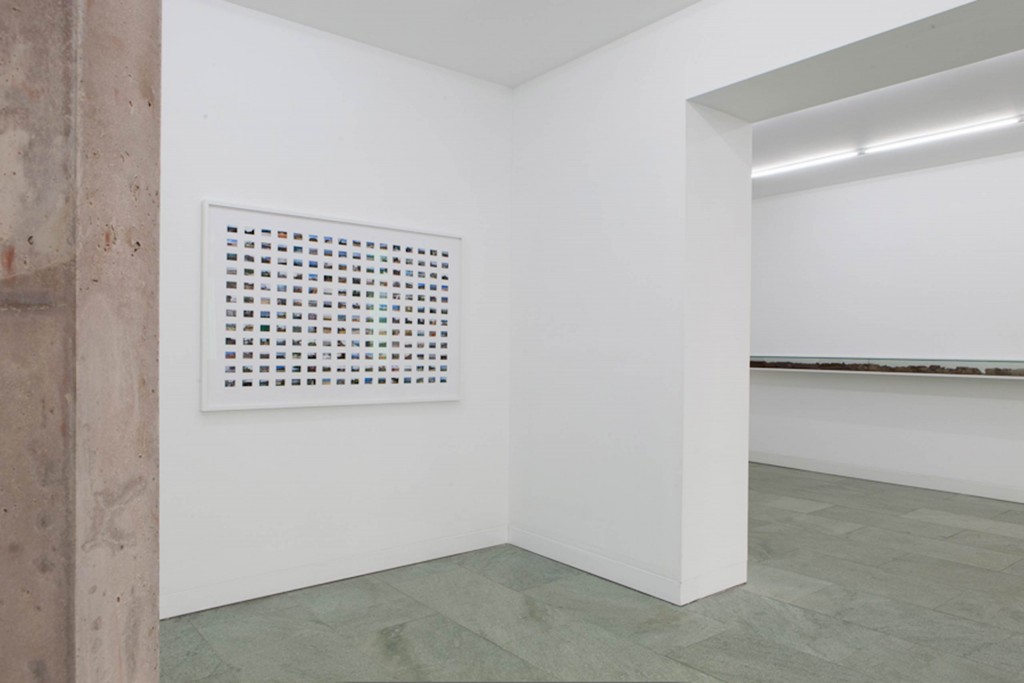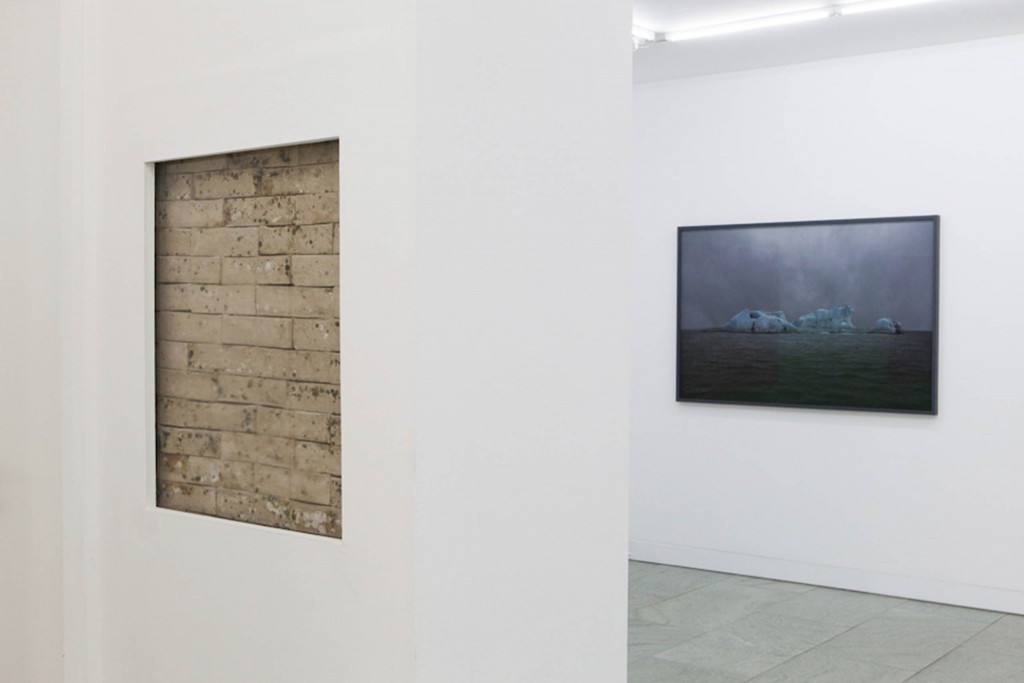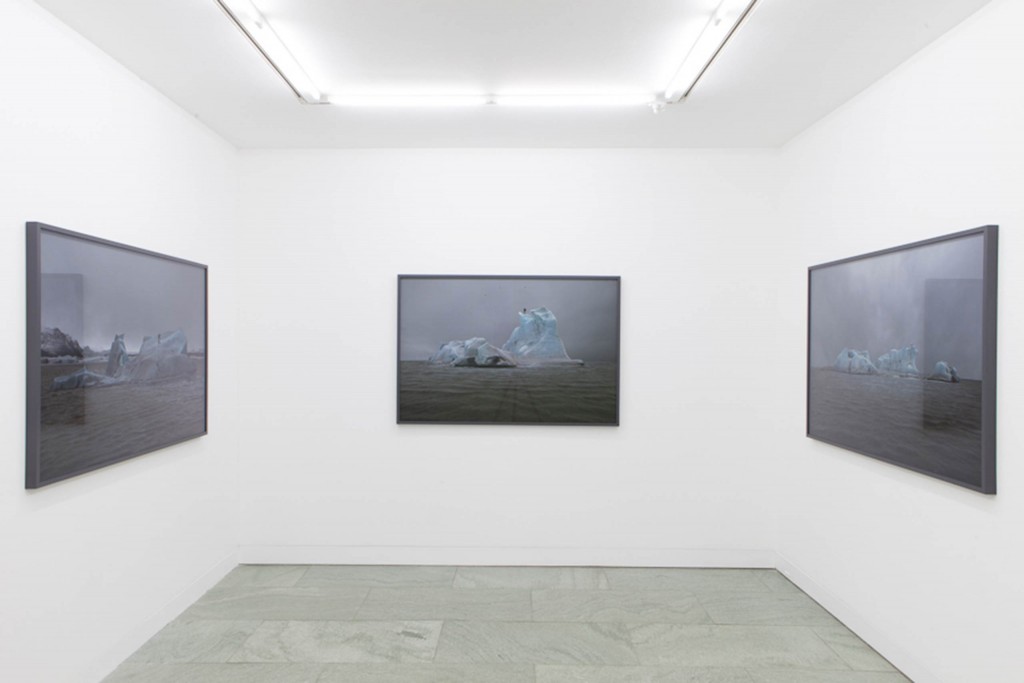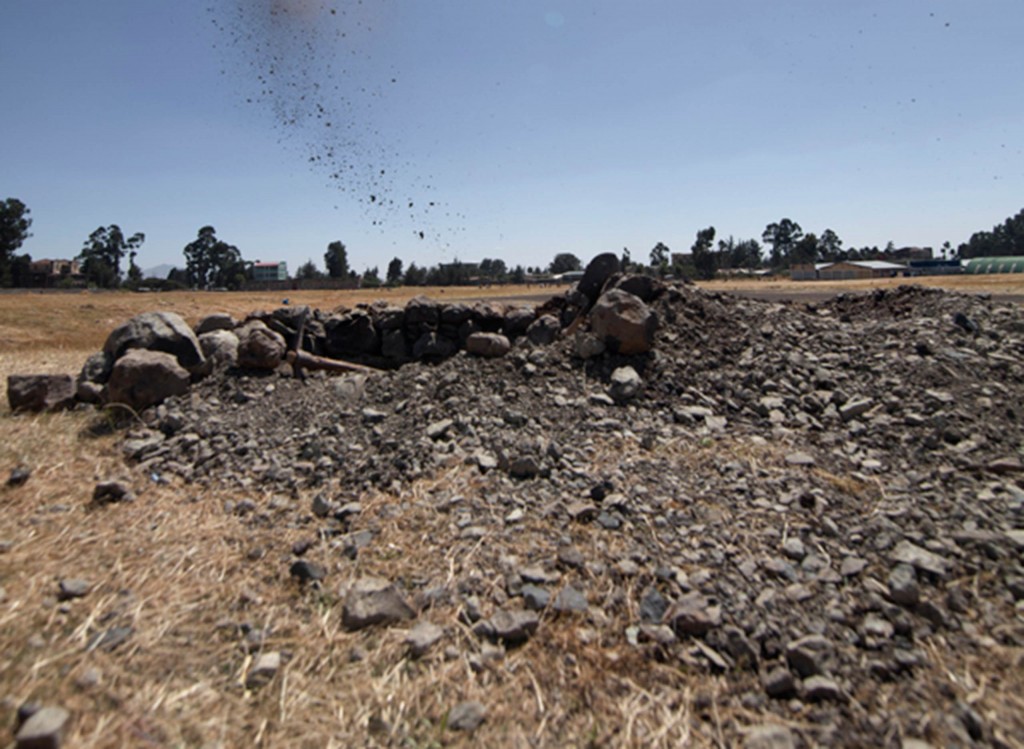DITTRICH & SCHLECHTRIEM is pleased announce the second solo-exhibition of Julian Charrière, titled On the Sidewalk, I Have Forgotten the Dinosauria. The exhibition features several new works by the young Swiss artist, which illustrate the post-modern approaches of time-space compression in coexistence with the historicity and perception of our environment.
What is time and how do we perceive space? How can we define these sizes? All human beings ask these questions at some point. An escape from the time-space axioms is inconceivable for us. These primordial factors are far more than just timing and locations we are able to comprehend. They define our lives significantly but are displaced from everyday consciousness. “Meet the time as it seeks us” speaks Shakespeare to us in Cymbeline.
With On the Sidewalk, I Have Forgotten the Dinosauria Charrière demonstrates various details that we have forgotten in the rush of everyday life. He presents selected messages of our environment embodied in artistic representation. The exhibition features several elements that speak to us – forgotten due to sheer weariness, even if they are immanent in our day-to-day basis.
Today’s digital expansion allows us to simulate almost everything. We can go back to ancient times; we are able to explore cities, mountains and seas. We are capable of doing almost everything – more or less always. And thus we inevitably lose more and more of our connection to the temporal and spatial limits, the “Nature” banished us in. According to that Charrière investigates the meaning of concealed ordinariness – the genesis and formation of things around us.
Sedimentation of Floating Worlds manages to unite the world in one piece – a concrete sculpture, which is formed out of stones and sand grains from all existing countries in the world. Due to today’s logistic capabilities it was achievable to deliver the stones and sand-grains within a very short period of time to Berlin. The world-monument provides a contrast to the expanding digital space that allows us to explore virtually almost all territories in the world without limitations. In parallel, 195 photographs – one from each existing country – are documenting the visual representation of the abstract form. The photos were shot by Charrière’s local acquaintances, who made the creation of the work possible – sending the stones and sand grains to Berlin. Their images show an intimate and unfamiliar view of each country that is home to our world.
In his newest work that was produced in Iceland Charrière scrutinizes the phenomena of stored time and the existential question of being. In addition to I Dig Myself Into a Hole, when Charrière eponymously dug himself into a hole in Ethiopia he demonstrated the metaphor of a life-path, in which everyone is caught. Now, in Iceland, Charrière switches from depth to heights, trying to burn down an iceberg. This Sisyphean task is an exemplification of our approach to nature and life – visualizing futility, search for meaning and the exploration of ourselves.
The title of the exhibition On the Sidewalk, I Have Forgotten the Dinosauria brings back to mind essential thoughts one blanks out in everyday life. We live in a complex system, where each object is subordinated to a multi-layered formation and order. There are hidden worlds that will become apparent upon a closer look – it is just a matter of perspective. It is a call for pluralism of our weary gaze.
Born in 1987, Julian Charrière currently lives and works in Berlin. A Meisterschüler of Olafur Eliasson and participant of the Institut für Raumexperimente (Institute for Spatial Experiments), Charriere has exhibited his works – both solo and as a part of Das Numen – at various museums and institutions worldwide, including the Schinkel Pavillon and Haus der Kulturen der Welt in Berlin, the Venice Biennial and the Museum of Contemporary Art in Tokyo.
DITTRICH & SCHLECHTRIEM will publish a catalogue on occasion of the exhibition, which includes an essay by Magdalena Kröner. The gallery is open Tuesday through Saturday from 11 to 6 pm. During the weekend, April 27th-28th, the gallery will have extended opening hours from 11 to 7 pm. Please contact Owen Reynolds Clements with press requests or for further information at owen@dittrich-schlechtriem.com.
DITTRICH & SCHLECHTRIEM freut sich, am Freitag den 26. April, die zweite Einzelausstellung von Julian Charrière, mit dem Namen On the Sidewalk, I Have Forgotten the Dinosauria, zu präsentieren. Die Ausstellung zeigt mehrere neue Werke des jungen Schweizers, der die postmodernen Merkmale der „Raum-Zeit Verdichtung“ in Koexistenz mit der Geschichtlichkeit und Wahrnehmung unserer Umwelt veranschaulicht.
Was ist Zeit und wie ist Raum beschaffen? Wie werden diese Größen definiert? Diese Fragen stellen sich jedem Menschen. Ein Ausbruch aus diesen Axiomen ist für uns undenkbar – es sind gegebene Größen. Diese Urfaktoren sind weit mehr als nur Zeitplanung und uns bekannte Örtlichkeiten. Sie bestimmen unser Leben maßgeblich, werden aber aus dem alltäglichen Bewusstsein verdrängt. „Begegnen wir der Zeit, wie sie uns sucht!“ spricht Shakespeare zu uns in Cymbeline.
Mit On the Sidewalk, I Have Forgotten the Dinosauria zeigt Charrière unmittelbar Dinge auf, die wir in der Eile des Alltags vergessen haben. Er präsentiert selektierte Botschaften unserer Umwelt, die ihre Verkörperung in künstlerischer Darstellung finden. Die Ausstellung vereinigt etliche Elemente die zu uns sprechen – vor lauter Überdruss nicht wahrgenommen, auch wenn sie der Umwelt und unserem täglichen Leben immanent sind.
Die digitale Expansion ermöglicht uns heutzutage fast alles zu simulieren. Wir können zurück in die Antike, wir sind imstande Städte, Berge und Meere zu erkunden. Wir können fast alles – fast immer. Und dadurch verlieren wir unweigerlich immer mehr den Bezug zu den räumlichen und zeitlichen Grenzen, in die uns die Natur seit jeher verbannt hat. Daran anknüpfend erforscht Charrière die verborgene Alltäglichkeit – die Genese und Formation der Dinge.
Die Welt vereinigen in einem Stück schafft Sedimentation of Floating Worlds – eine Skulptur aus Steinen und Sandkörnern aus allen heute existierenden Staaten der Erde. Das Welt-Monument steht im Kontrast zum expandierenden digitalen Raum, der uns nahezu grenzenlos alle Territorien der Erde erkunden lässt. Parallel dazu dokumentieren 195 Länderfotografien – eines aus jedem Land der Welt – das visuelle Abbild der abstrakten Form. Die Fotos wurden von den einheimischen Bekannten Charrières geschossen, die aufgrund der heutigen logistisch-fortschrittlichen Möglichkeiten die Sandkörner und Steine aus allen Teilen dieser Erde, innerhalb kürzester Zeit, nach Berlin senden konnten. Die Fotos zeigen einen intimen und uns unbekannten Blick auf jedes Land, das unsere Welt beherbergt.
In seinem neusten Werk, das in Island produziert wurde geht Charrière, neben dem Phänomen gespeicherter Zeit, der existenziellen Frage des Daseins nach. gänzend zu I Dig Myself Into a Hole, als Charrière sich in Äthiopien in ein Loch eingräbt und eine Metaphorik des Lebenswegs veranschaulicht in dem man selbst gefangen ist, wechselt er nun aus der Tiefe in die Höhe und versucht einen Eisberg zu verbrennen. Diese Sisyphos-Arbeit verdeutlicht unseren Umgang mit Natur und Leben – Sinnlosigkeit, Sinnsuche und die Erkundung unserer selbst.
Der Titel der Ausstellung On the Sidewalk, I Have Forgotten the Dinosauria vergegenwärtigt dem Betrachter, das was um uns herum oft in Vergessenheit gerät. Wir leben in einem komplexen System, in dem jedes Objekt einer eigenen vielschichtigen Genese und Ordnung untersteht. Es sind „versteckte“ Welten, die bei genauem hinschauen ersichtlich werden – es ist nur eine Frage der Perspektive. Es ist eine Forderung nach Pluralität unseres erschöpften Blickes.
Julian Charrière ist im Jahre 1987 geboren. Er lebt und arbeitet in Berlin. Als Meisterschüler von Olafur Eliasson und Teilnehmer des Instituts für Raumexperimente, hat Charrière seine Arbeiten, einzeln und als Teil des Künstlerkollektivs Das Numen, schon an zahlreichen Museen und Institutionen weltweit ausgestellt, unter anderem im Schinkel Pavillon und dem Haus der Kulturen der Welt in Berlin, der Biennale in Venedig, sowie dem Museum of Contemporary Art in Tokio.
DITTRICH & SCHLECHTRIEM wird einen Katalog zur Ausstellung, mit einem Essay von Magdalena Kröner, veröffentlichen. Die Galerie ist von Dienstag bis Samstag von 11 bis 18 Uhr geöffnet. Am Wochenende des 27.-28. Aprils hat die Galerie verlängerte Öffnungszeiten von 11 bis 19 Uhr. Für Presseanfragen oder weitere Informationen wenden Sie sich bitte an David Khalat, david@dittrich-schlechtriem.com/old/old.

























